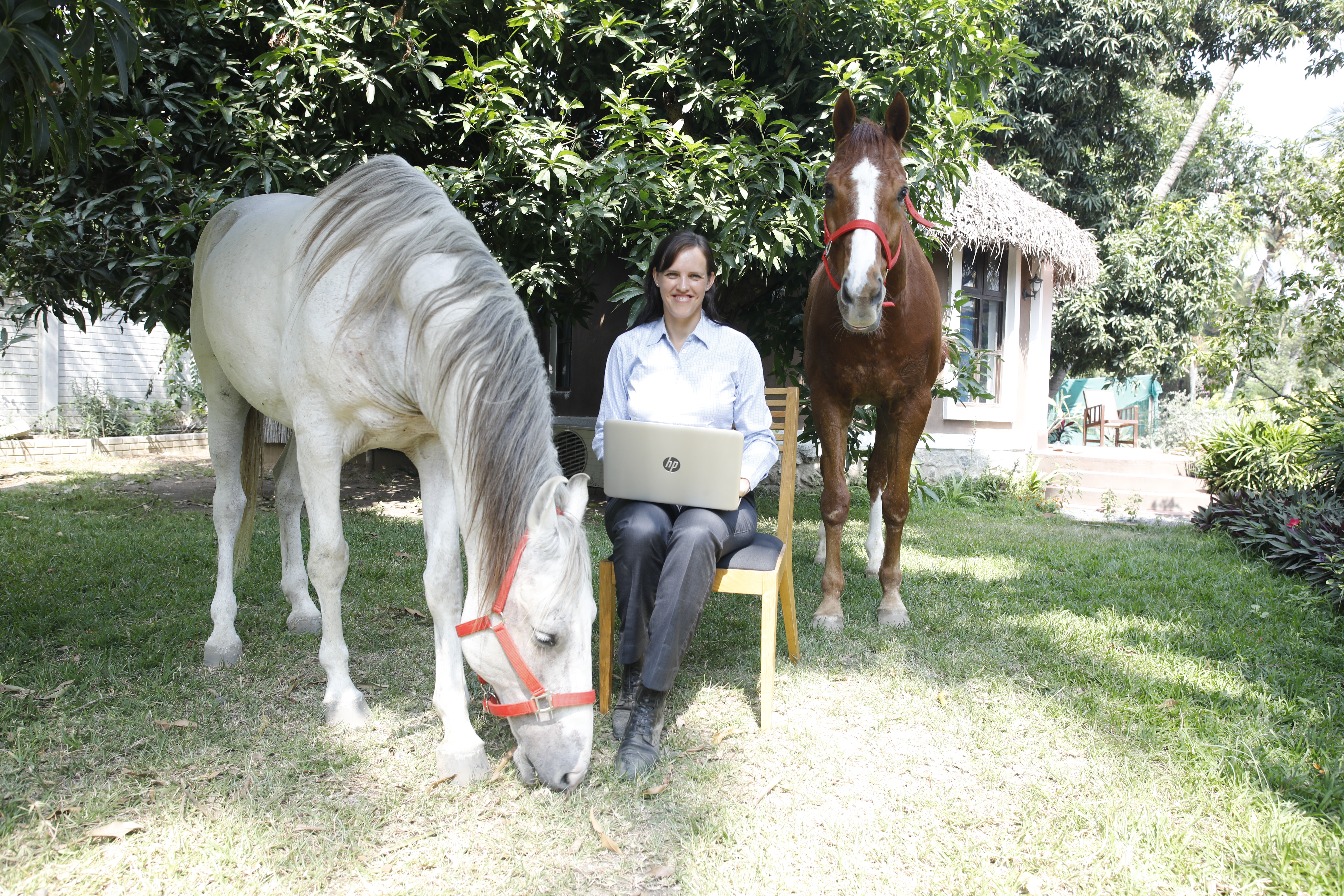How can horses help train future leaders?

There are a whole host of different courses aimed at nurturing leaders, but ones that involve horses must be few and far between. But that’s exactly what horse trainer and coach Isabelle Hasleder does. She recognises that successful leaders are constantly looking for growth opportunities, and they know that they have to push themselves outside their “comfort zones” in order to get better.
So why horses? ‘’A horse reflects the behaviour, emotions and intentions of a person in one second. If you are leading the way correctly, with energy, confidence, direction as well as an encouraging conversation with the horse this will be a simple task’’.
‘’But if you lose focus, trust, energy or some doubts are coming up in your mind the horse will respond in the same second, stop or turn another way. It’s powerful to see the impact of your own actions and get immediate feedback,’’ she says.
When we look at this scenario in a corporate context, a leader might communicate a task to their team clearly. But if the desired results are not delivered they often blame the team or other external circumstances for the failure. One of the explanations could be that the “encouraging conversation” from the leader was missing?
Hasleder adds: ‘’The big challenge in a corporate environment is that we see the impact and results of our actions much later, and it is really difficult to get constructive feedback – that’s why innovative leaders take feedback from horses and adopt effective strategies in the process of the workshop.’’
She observes that when people work with different horses they realize very fast that there is no “one size fits all” approach – every horse has its own character and preferences, the same as humans do. Situational leadership can make all the difference.
‘’In our workshops we start with analysing the different behaviours and characters and then step by step get into different leadership exercises like Leading by Example, Delegation or Leading from the Top. The better a leader can adapt his or her leadership strategy to the team or person he/she is working with, the more promising the results will be’’.
Building trust
In our ever-increasing technology-based workplaces, where human interaction is gradually reducing, building a trusted relationship is still as important as ever. Sadly, modern leaders or junior level managers often neglect the importance of building trust with others. ‘’Even people who have never touched a horse before will build a strong relationship with a horse during the first few hours. Horses are unbiased, trusting and honest right from the beginning – this encourages us to work with them, but it also gives us a fair idea of how we can build stronger relationships between humans’’.
So is it just leaders who should consider training with horses? No, it’s also relevant for salespeople and project managers. ‘’It’s about bringing people back to nature and getting them to experience simple but powerful strategies to enhance their emotional intelligence and impact at their corporate roles’’.
But who is the training aimed at specifically? ‘’We work with leaders at CXO level, with first time managers and everyone in-between who wants to refine their leadership skills and enhance emotional intelligence’’.
While Hasleder’s horse training is currently conducted in India (with workshops in Delhi, Mumbai, Chennai, Bangalore and Hyderabad), she wants to extend the programme to other cities across Asia including Hong Kong, Singapore and Shanghai. Hasleder has worked with corporate clients like PayPal and Cisco.



